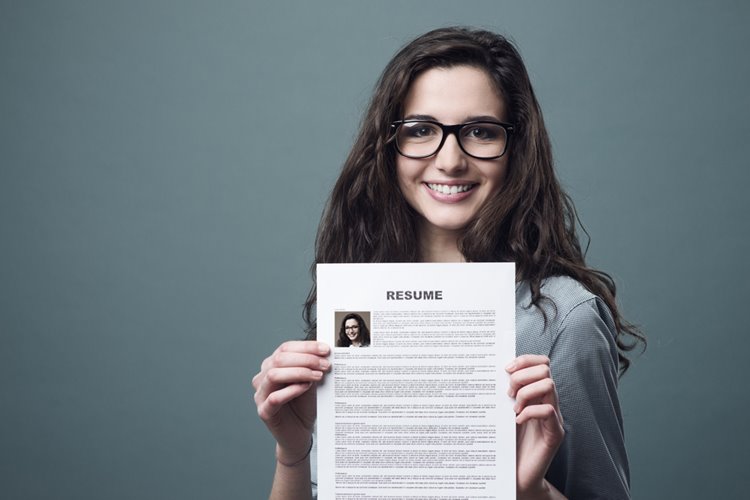Sure fire tips to submitting a resume employers will love

These days resume examples online seem to come in a variety of shapes, some with wild designs and colours. People are able to do more with common tools like Word and various online editors, so it is tempting to create an offbeat resume that will stand out and get noticed.
However, unless you're a designer or entertainer, it might not be in your best interest to rely on eye-catching tricks to get yourself to the interview phase. Most recruiters will tell you that for the majority of us, a professional, well-written resume is key to a successful job application.
If you’re looking to start submitting your resume to potential employers, here are 3 tips and a downloadable resume template to help ensure yours gets read, and hopefully helps you land that interview.

Give them what they're asking for
The first thing that will stand out is that you did (or didn’t) send them what they asked for. So, if you don’t really understand the difference between a CV and a resume, let us break it down for you.
In Australia the terms resume and CV have sometimes become interchangeable. But generally, a resume would be considered a one to two-page document of your work history, with the details tailored to suit each role you are applying for.
By contrast, a CV is a more comprehensive record of your work and educational accomplishments and skills, which does not change for each application. A CV can run several pages long, depending on your experience. We will cover CVs in part 2 of this series in May, as you should have both versions in your job application arsenal.
Download your free resume template here.
So, if your employer asks for a CV – send them a CV. Your cover letter (always send a cover letter) can then be used to fill in how your experience is relevant to the particular job. Plus, it’s your opportunity to show off some of your writing skills. Look out for part 3 of this series in May for more information on cover letters, and why you should embrace them.

Keep them interested
Hiring managers receive a ton of resumes for every job they post, and they don't have the time or resources to review each resume in depth. If you want to keep them interested, the best thing you can do is to keep your resume clean and clear, and leave out the unnecessary fluff.
Each resume you submit should be a highlights real of your skills and work experiences that are specifically relevant to the role you’re applying for. Employers want to cut to the chase and ensure you are the right match for their role, and if you are not ticking all the boxes in a direct manner, they'll feel their time is being wasted.
It’s not what they can do for you
Instead of writing out a career objective, this is your opportunity to succinctly tell the company where your career path so nicely intersects with what they're looking for. Instead provide a summary that relates to the role, giving them a good idea of how your experience is so nicely suited to their needs. Win/win!
Leave out ancient history
Your employer will want to know the most relevant details of your education, and they'll be thankful to you if you leave out anything that is unnecessary.
So, if you've achieved qualifications above high-school level, then you can safely leave the high school details off the resume. Any relevant qualifications after high-school should be listed. If your highest level of schooling was high school, you should list it, along with any achievements. Especially if you think they'll be relevant to the job you’re applying for.
This also applies to jobs you held 15 years ago that have no relevance to the current role. Stuffing your resume with useless information will likely result in the employer being bored or put off. So leave it out.
The unnecessary personal details
- Mr BA, GradDip
Gone are old fashioned prefixes like Mr & Mrs, as are most degrees after a name (with the exception of a Ph.D for some reason). It will only serve to make the readers’ eyes roll into the back of their heads.
- Getting in touch
Leave out the street address, it's actually seen as a bit of a security issue. Everyone can find you on LinkedIn or email anyway.
Which gets us into email addresses. Get yourself one that is professional. No one is going to be interested in offering an interview to ticklebearz4@emailbees.com.au.
- Pictures of yourself
Apart from it being a bit of a fad, it dips its toes into the realm of hiring biases, and might work against you. So it's best to leave it off.
- References
Save a tree and let them contact your references if and when you warrant an interview.
- Hobbies
This is something you could talk about in the interview, should that come up. However your resume is not the place for this info.
Avoid lists of skills that should be obvious
We all have soft skills, and they should be apparent based on the content of your resume. They will understand you are good with time management when you explain how you were able to achieve a good outcome for that project you managed, on time.
However, it is not always easy to weave in hard skills without making the document too long, so those should be listed in an easy to read manner.

The look and feel
While it is tempting to bust out your inner graphic designer, your best bet is to take a page from the old K.I.S.S. playbook. No, not the one with Gene Simmons. Keep it simple (stupid) is really how you want to go with a resume. Clean lines and plenty of white space (hello there margins!) will help the eye travel more easily for better readability. This includes keeping fonts to the basics like Arial, Calibri, Garamond or Helvettica.
The next step is to ensure your resume looks good, has the proper information and is in the right order. We’ve put together a free resume template to help get you started, which you can download here. Feel free to copy and paste the sections as you add skills and careers, but don’t go back much further than 10 years, and limit the resume to two pages. Good luck!


)
)

